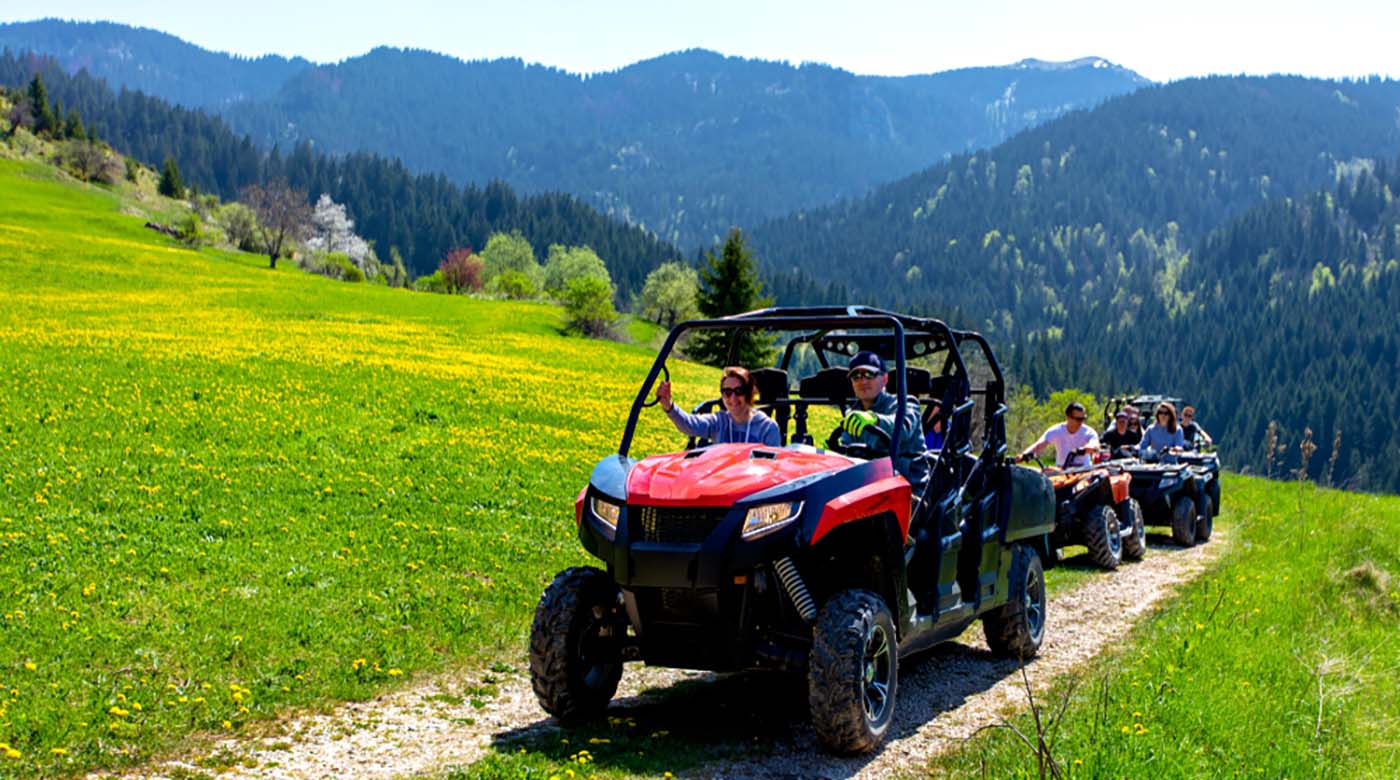Nomad_Soul/shutterstock.com
Despite the name, all-terrain, you can’t ride an ATV anywhere. Off-road vehicles are only allowed in designated areas. These laws are to protect you, pedestrians, car drivers, and the local environment. So, where can you legally ride worry-free?
Where You Can Ride An ATV
Every state imposes different rules for off-road vehicles regarding where they can ride. Check your area’s requirements and regulations for more information.
Private Property
You can ride on your property to your heart’s content. You don’t need permission or a permit to drive on your own land. If you want to drive on someone’s property, such as a friend or family member’s, you’ll need permission from the owner. It helps to have their approval in writing if you need to prove your right to ride to a neighbor or someone working on the property. Stay within the owner’s property lines to avoid accidentally roving onto someone else’s land.
Designated ATV Trails and Parks
You can ride at ATV parks and on trails approved for off-road vehicles. Check with the park authority to ensure you meet the requirements. You may need an OHV sticker or registration to participate. ATVs are only allowed in designated areas away from hikers, pedestrians, and wildlife habitats. Stay within the bounds to maintain a safe distance.

Sergii Kumer/shutterstock.com
Where You Can’t Ride An ATV
-
On the Street
ATVs and other off-road vehicles are not street legal in the U.S. If you want to drive on public roads, you need to make adjustments and modifications to make your vehicle more like a passenger car. Every state and locality has different rules for making ATVs street legal. Some areas don’t allow them under any circumstances.
-
Anywhere You Don’t Have Permission
You need permission to drive an ATV unless you’re riding on your property. If you’re not sure if you’re allowed to ride, err on the side of caution and keep off the property.
ATV Riding Essentials
If you’re allowed to ride, make sure you’re wearing the proper gear. Property owners and ATV parks enforce rules of conduct for ATV riders to keep them safe. Most public riding areas require riders to wear a full-face or half-face helmet with goggles to reduce the risk of head injuries and help them see the trail clearly. You can also wear knee, shoulder, and elbow pads to protect your joints in a fall, even if the location doesn’t require them. Learn about ATV riding gear to comply with the requirements.
Riding in a group? Use an ATV communication system to connect wirelessly to your companions. Dynamic Mesh Communication (DMC) allows you to sync up to 15 Bluetooth headsets to the same channel, with direct links between each unit. You won’t get disconnected if you change formation, and the device relinks automatically when you come back in range.

Odua Images/shutterstock.com
UTV riders and passengers may not need helmets. Use the Cardo Packtalk Edgephones to connect wirelessly to ATV riders and anyone in the vehicle. They’re also perfect for coaches giving instructions from the sidelines.
Use Off-Road Headsets to Communicate Hands-Free Anywhere You GoHow to Find Places to Ride an ATV
There are places to ride in every state. If you live in a major city, you’ll likely need to travel to more remote areas to find parks and properties suitable for ATVs. You can search for the phrase “Where can you ride an ATV near me” to find local parks and trails. Use the website TrailLink to find more options for ATVs. You can quickly compare the types of terrain, trail lengths, and park rules to find the right area for your next adventure.
Ride with Peace of Mind
Knowing you have the all-clear to ride your ATV makes the experience more enjoyable. You could face a steep fine if you’re caught riding on someone’s property or outside the bounds. Follow the rules to make the most of your time on the trail.





